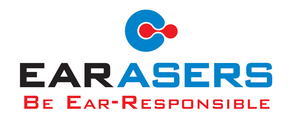Do NRR's fully explain the hearing protection of earplugs?
No, NRR (Noise Reduction Rating) alone does not fully explain the hearing protection offered by earplugs. While NRR provides a standardized measure of the earplug's ability to reduce noise levels, it does not account for all the factors that can affect real-world performance and effectiveness.
Here are a few reasons why NRR alone may not fully explain hearing protection:
-
Variability in Fit: The NRR is determined based on laboratory testing where earplugs are inserted correctly and fitted properly. However, in real-world situations, achieving a perfect fit can be challenging for some individuals. If earplugs are not inserted correctly or do not fit properly, their effectiveness in reducing noise can be compromised.
-
Frequency Response: The NRR provides an average noise reduction across different frequencies but does not account for variations in noise levels at specific frequencies. Some earplugs may perform better at certain frequencies while providing less protection at others.
-
Environmental Factors: The NRR is determined in controlled laboratory conditions and does not consider the impact of real-world environmental factors, such as background noise or multiple noise sources. These factors can affect the overall effectiveness of earplugs in reducing noise exposure.
-
User Compliance: The NRR assumes that users are using the earplugs correctly and consistently. However, improper use, inconsistent wearing, or failure to follow instructions can reduce the actual noise reduction achieved.
To obtain a more accurate understanding of the hearing protection offered by earplugs, it is recommended to consider additional factors beyond the NRR:
-
Real-World Testing: Look for studies or field evaluations that assess the performance of specific earplugs in realistic environments to better understand their effectiveness.
-
Comfort and Fit: Consider the comfort and fit of the earplugs, as proper fit is crucial for achieving optimal noise reduction. Seek earplugs that are designed to fit well and provide a secure seal.
-
Considerations for Specific Environments: Certain earplugs may be designed for specific noise environments, such as industrial settings, music events, or shooting ranges. Understanding the specific needs of your environment can help you select the most appropriate earplugs.
In summary, while the NRR provides a standardized measure of noise reduction, it should be considered alongside other factors such as fit, comfort, and real-world performance to better assess the overall hearing protection offered by earplugs.

